The Tauranga Taupo River | Manic Guide To Fly Fishing In Taupo
Located roughly 10 minutes north of Turangi on SH1, the Tauranga Taupo river is a very popular and highly valued fishery among anglers. Due to the high quality of fishing found here the Tauranga Taupo plays a crucial part of the overall angling experience the Taupo fishery offers. Much like Lake Taupo’s other tributaries, the river is most well-known for its autumn and winter runs of spawning fish from the lake. At this time of year angling relies heavily on the naturally occurring events, for the great fishing they bring, which makes up the greatest part of the angling opportunities on offer.
The Tauranga Taupo river is a really fun river to fish with many great qualities that offer good angling all year round. The nature of the rivers medium size, depth, and more gentle flows makes it a very manageable river for anglers of all abilities and lighter flies can be used to great effect which makes for less demanding experience on the water when compared to the big water of the Tongariro.
MORE FROM THE MANIC GUIDE TO FLY FISHING IN TAUPO:
- PART ONE: The Tongariro River
- PART THREE: Lake Otamangakau
- PART FOUR: The Hinemaiaia River
- BONUS: Andrew Harding's Ten Taupo Fly Fishing Tips

During winter fishing is typically hot and cold. Results will often depend on fish numbers that hold in the river at any one time. River flows and water colour also have a great effect on fishing productivity. Weather watching and looking at forecasts is a great tool to help with figuring out the best timing of these occasions. Conditions after a flood or fresh provide the best fishing as the river is falling combined with flows that are still a little higher than normal and the water still holding some nice green colour. A change in weather along with a lowered barometer triggers fish to run hard, moving swiftly into and up the river in great numbers safely under the cover of the dark night sky and a swollen dirty river.
This is when mayhem breaks out in the wee hours of the morning as eager anglers race to reach the water before daybreak in the dark with the use of a head lamp. As the classic saying goes, the early bird gets the worm which, is very true in this case. This is the prime time to fish as by now pools are typically loaded with trout. Due to being fresh out the lake and the rivers the discoloured water fish are very receptive to the fly and things can get hectic at times with fish being hooked and pulled out of the water left, right and centre.
On the other hand, fishing can also be tough due to less favourable conditions and a few other compacting factors. During normal flows the river runs clear and as a result of the rivers medium size and lack of good cover trout are spooked easily, becoming skittery after the impacts of angling pressure which makes them difficult to catch and tempt to the fly.
The Tauranga Taupo is a great option for a full day on the water. Fishing water is accessed easily via a well-worn anglers access track which runs up on the true left side of the river and opens up plenty of water. There is well over a day’s worth of fishing from the car park above the main road bridge up to the winter limit at the Ranger’s Pool, expect to walk 13kms+. Nymphing, single hand spey, czech nymphing and a wet lining are well suited techniques for fishing in winter and a great fishing approach is to nymph your way upriver, followed by swinging flies back down with the single hand spey set up. This is a fun way to cover water by mixing up the fishing techniques and will often surprise you as to how many fish you’ve missed fishing to on your way up.

Outside of the winter season the river also provides good angling opportunities. In spring, good numbers of rainbow trout hold throughout the river’s habitat, providing great fishing. Brown trout numbers naturally increase during summer as they make their migratory move after a period in the lake and back into the river system again, adding a quality of brown trout to the fishing opportunities.
The months of spring through to summer are great times to fish as this river receives very little angling pressure compared to winter. Great dry fly fishing can be found which includes stream born insect hatches along with many terrestrial insects like beetles. By mid-summer terrestrial insect activity is at its height, this normally sees prolific numbers of deafening cicadas on the wing and passion vine hoppers everywhere. Trout really key into this additional insect activity at this time of year and tend to lose their inhibitions while in a feeding frenzy. This provides exciting fishing, with one on one close encounters with the fish. From December 1st the upper river opens offering a semi back country experience, accessed from the end of the angler’s access track, by walking, and wading upriver. Sight fishing dominates the experience here, Trout can be found feeding regularly from the surface during the summer months, which provide typically warm, and very pleasant conditions.
The winter runs of spawning fish are impressive and traditionally the river sees some the biggest, and best conditioned fish to come out the lake. The sight fishing element and dry fly fishing on offer is a great quality and adds a really nice touch and along with the rivers more favourable and easily managed size makes it hard to resist, and so close to Turangi. This is a great fishing experience to be had. We recommend you put the Tauranga Taupo high on your list to hit next time you’re fly fishing in the Taupo region.
HOW TO GET THE BEST OUT OF YOUR DAY FLY FISHING THE TAURANGA TAUPO RIVER
Over the winter season trout hold throughout the river although the pools provide the most productive and reliable water. In general, it pays to be on the water early for the best shot at catching fish which have settled overnight from angling attention of the previous day. This is particularly important during less favourable conditions of a low and clear river. It is a good idea to fish your feet first, then progressively fish your way over to the far bank. The tails of pools can be challenging to fish, due to the slow-moving water and its slick surface fish are often spooked easily. Focus your winter nymphing presentations on the more turbulent water found in middle and heads of pools and holding lies hard against the bank, or a fallen tree will often produce fish when the going gets tough.

With indicator nymphing mending is crucial for achieving a drag free drift which ensures the flies are down in the fish zone. The cast and drift will need to be set up nicely and well maintained by mending the line as needed. Wet lining and single hand spey is most productive before the sun has hit the water however higher flows, with colour in the water, are the deadliest conditions for these methods. Czech nymphing is very reliable and productive in most conditions. For best results a subtle change to the leader and fly choice is required to best suit conditions of the day. During spring, and particularly summer, a more subtle approach is required for nymphing and dry fly fishing, with a 9ft #5 rod being all that is required.
KYLE'S INSIDER TIPS
When indicator nymphing a cheeky and effective way to lengthen or create the perfect drag free drift is to “walk the dog”. This technique covers water easily with the flies right in the fish zone for much, much longer. This is achieved by simply walking down river horizontal to the indicator and at the same speed as the drift. Deadly as one cast covers a huge amount of water, drifts are easy to maintain and there is less spooking of fish due to reduced casts.

Be sure to fish the heavy seams of the pools thoroughly, hard against that far bank or fallen tree with your flies sunk well down. There is always more there than meets the eye!
When nymphing indicator performance is a big deal. To get the best from your indicator, keep indicator size realistic as a big, budgie sized indicator just makes for hard work, A dense medium sized well treated indicator is ideal. Tip: Used a fine-toothed comb to brush floatant into the indicator.
TAURANGA TAUPO RIVER ACCESS OVERVIEW
There are really only two points of access, both to different sections of the lower river. Basically head just north of Kiko Rd and a couple of hundred metres before the Challenge service station is a right hand gravel road heading down to the carpark. It's very easy to spot from the main road, especially after rain as it will be jam packed full of cars.
The second point of access is directly on the other side of the Challenge service station. Turn right onto Tuki St and head to the end, park your car and make your way towards the river. This is downstream of the main carpark and quite often you can have this section to yourself. You can also hang a right a Heuheu Parade and work your way down to the rivermouth, but we'll cover that off in a future article.
If you really want to head off grid then the very upper river is accessible off Kiko Rd but this is unmarked and with a lot of private land around it pays to have some local knowledge about how to get in there. It's steep and gorgy so only a day out for the really fit and committed.
LOWER RIVER:
Environment: Very Low gradient
Features: Long connecting, gentle pools.
Characteristics: Sweeping, slow moving, and moderately deep pools, with a predominantly sand, and gravel riverbed and very few rocks.
MIDDLE REACHES:
Environment: Low gradient, more open water, surrounded by pine forest blocks.
Features: Scrubby, cut riverbanks, with willow trees. Well established pools, with the occasional run, and the odd braid. Gravel beaches, and banks. River bead is dominated by a sand and gravel bottom with very few rocks.
Characteristics: A meandering riverbed, featuring many well-established pools, and the occasional run. Pools are relatively deep, with moderate to gentle flows, that typically alternate from long straight pools, to classic corner pools.
UPPER REACHES:
Environment: Medium gradient, surrounded by Pine forests. A more remote feel. Once you get above the Ranger's Pool winter limit it quickly becomes smaller, more gorgy water.
Features: Scrubby, cut banks, with some willow trees. Relatively stable, and featured water. River bead is dominated by a sand and gravel bottom, with very few rocks.
Characteristics: Meandering riverbed, that consists of many pools and the occasional run. Pools typically alternate, from long straight pools, to classic corner pools, which are relatively deep, with moderate to gentle flows.
METHODS FOR FLY FISHING ON THE TAURANGA TAUPO RIVER
NYMPHING
This is the most reliable and productive method and is a great way to cover all aspects of the river and imitate the food source easily.
Depending on the water, either cast upstream or straight across and allow the flies to sink quickly and drift back towards you, past your body and finishing below. Staying in touch with the line is also very important and this is achieved by keeping any excess line on the water below the rod tip to minimum. This will ensure a positive strike and hook up when the indicator does eventually go under. For best results, the distance between indicator and flies will need to be adjusted regularly to suit water depth, and speed.
A double nymph rig is the ideal set up and very effective way to cover water. Match the lightest fly you can get away with to the situation, and where needed change out the heavy fly to best suit the water depth and speed. A variety of weighted nymphs are essential for covering all basis.
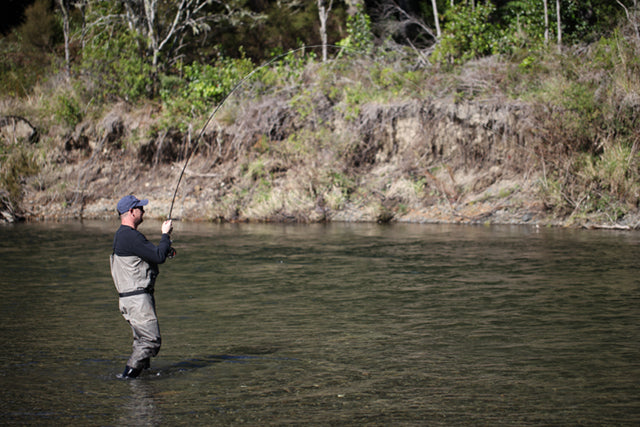
Pools can be more challenging at times due to greater depth, varying currents and density of the water. For best results, increase the distance from the indicator to the heavy fly, making sure it's no less than a rod length. If this still is insufficient, then increase the weight of the bomb fly. A heavier fly is generally needed to get down quickly which is crucial for beating the heavy currents, ensuring the flies reach the fish. Concentrate on setting up a good drift well ahead of your intended target as this gives plenty of time for the flies to sink down into the zone. A tell tail sign of achieving an effective drift is when the strike indicator is standing up right as this indicates the leader has straightened completely and the flies are near the bottom. When the indicator bob’s up and down, this means the flies are on the bottom. Look for these cue’s because you're right in the zone and just about to get the eat.
DRY FLY
Suitable for covering all water, the evening rise is a reliable time to fish depending on insect hatches. In general, a dead drifted fly works, although during a caddis hatch a skated caddis on the water surface is deadly. During summer fish can be sight fished to, with terrestrial patterns like cicadas and passion vine hoppers. The Tauranga Taupo is notorious for rising fish that seem impossible to hook, these are generally passion vine hopper feeders and it pays to have a few different patterns and sizes on hand to break the code of the day.
WET LINING & SINGLE HAND SPEY
Swinging flies across and down is a very popular and reliable method for covering most water, even more so when the river is carrying a lot of colour or for getting those brown trout to eat. Position yourself in the river, ideally no more than thigh deep, and facing the intended target cast across the river. A u-shaped belly will form in the line naturally by the current below the rod tip downstream of you, now all you need to do is make sure you keep in contact with line throughout the swing, and hey presto, you're fishing! Once the fly line has straightened out directly below it's time to strip the line in and repeat. If a piece of water demands your fly to sink immediately to reach a specific tricky lie this can be achieved by introducing slack line into the system with a simple mend or just slipping extra line on the water.
CZECH NYMPHING
Productive all year round suits most water, great for covering the fast flowing and broken water, deadly in winter on spawning fish. Using an upstream approach, systematically cover the water working through heads of pools and the fast currents found hard against and along the far bank of the river. These are very productive lies and this is a technique that covers them very effectively.

THE GEAR TO FISH THE TAURANGA TAUPO RIVER
When it comes to gear there's plenty of different ways to skin a cat, so to speak. So rather than drill down into various models and brands for each of the methods we're going to run through below we've supplied some quick links to what we like to use instead.
FLY RODS: Scott, Primal & Airflo
FLY REELS: Waterworks Lamson, Ross, & Abel
FLY LINES: Airflo
LEADER & TIPPET: Trouthunter & Airflo
INDICATORS: Loon Outdoors
FLIES: Manic Fly Collection
NYMPHING
Fly Rod: Medium Fast / Fast 9' #6, or 9'6" #6
Reel: Large arbor 5/6 or 7/8
Fly Line: Airflo SuperFlo Dash #6
Indicator: Yarn medium sized and well treated, attached to the loop at the end of fly line- (more often used during the winter months). Alternatively, an amount of yarn can be positioned further down the leader with a simple half hitch or a piece of tube which can be adjusted to suit water depth and situation.
Leader: Tapered mono, length 14ft-15ft (including tippet) from the end of the fly line to the first fly.
Tippet: 6-8lb fluorocarbon or monofilament nylon.
Double Nymph Rig:
- Tie on the weighted fly first to the end of the leader.
- Tie a section of tippet 300mm long to the curve of the hook.
- Tie the unweighted nymph to the remaining end of tippet.
Flies: Depending on the time of year, you will need a variety of different nymphs, unweighted and weighted to cover off the different situations that present themselves, egg patterns are great for Autumn and Winter also. As a starting point, here are my suggestions from the Manic Fly Collection:

Death Metal Pheasant Tail #10-#14

Simon's Ugly Hare & Copper #10-#12

Jig PT # 10-#12

Pheasant Tail Flashback #14-16

Hotspot Czech Nymph Caddis Green #12-#14
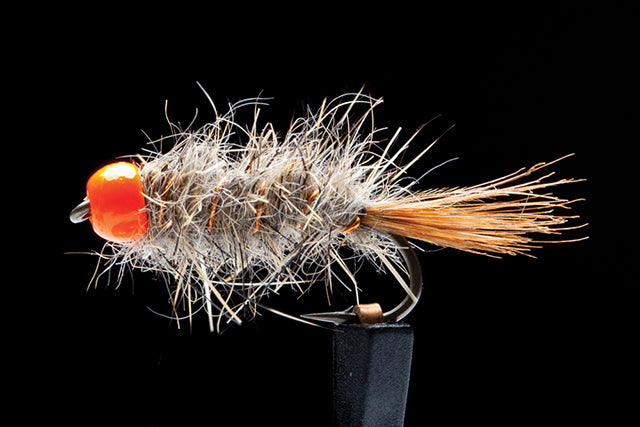
OTB Hare & Copper #10-#16

Otter's Egg Apricot #12-#14
DRY FLY
Fly Rod: Medium Fast / Fast 9' #5
Reel: Large arbor 5/6
Fly Line: Airflo SuperFlo Presentation #5
Leader: Tapered mono 9ft 3x
Tippet: Fluoro 4lb-7lb
Flies: Match the hatch is required at times but is not always crucial. Here's a good selection to cover most bases:

Parachute Adams #12

Quill Klink #14

Elk Hair Caddis #12
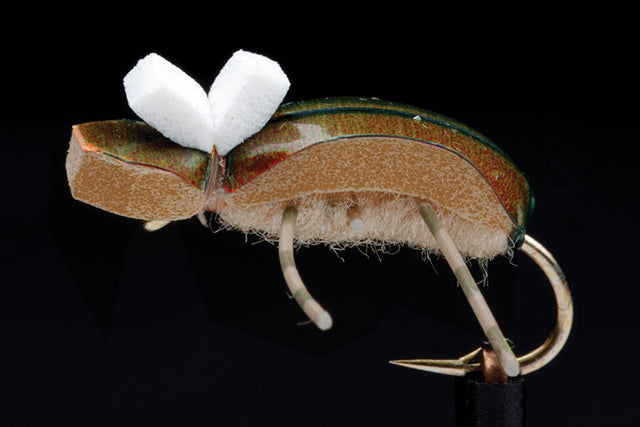
Foam Brown Beetle #12

Para Improved Humpy Blowfly #12

Kiwi Cicada

X Stimulator Royal #8

Rene’s Lace Moth #16
WET LINING
Fly Rod: Fast Action 9' or 9’6 “#6
Reel: Large arbor 5/6
Fly Line: Sinking Integrated Shooting head WF6/7 sink rate 5-7 inches per second.
Leader: Tapered monofilament 9ft 12lb
Flies: Woolly bugger and rabbit variants are the order of the day here, and at night go dark or lumo to spark some interest.

BH Woolly Bugger Olive

BH Woolly Bugger Black

Classic Rabbit Yellow
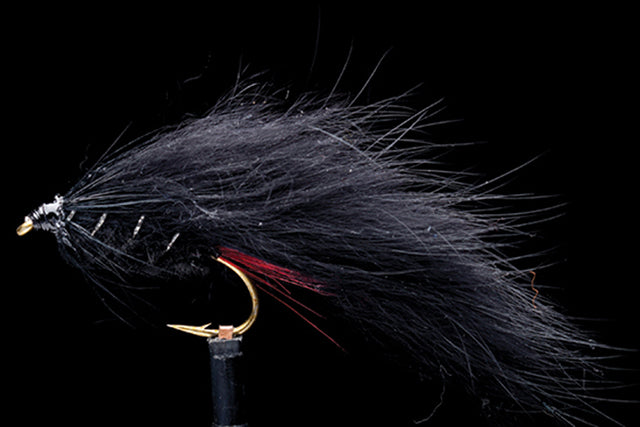
Classic Rabbit Black

Lumo Bugger
SINGLE HAND SPEY
Fly Rod: Fast Action 9' or 9’6 “#6
Reel: Large arbor fly 5/6
Fly line: Airflo Scout Skagit Head 240 grain, combined with 30lb mono running line.
Sink tips: Airflo Flo Tips T7-T14 will cover most basis. Airflo polyleaders are also very useful to have onhand.
Leader: Generally a length of 6ft which can be adjusted to suit conditions. Consists of a 200mm butt section of 20lb mono with a Perfection Loop tied at one end with a tippet ring tied to the other.
Tippet: Fluorocarbon 10-12lb.
Rig:
- Attach leader butt section with loop to loop connection.
- Attach fluorocarbon tippet section to the tippet ring.
- Attach fly using a lefty’s loop knot.
Flies:

FOB Olive Woolly Bugger #8

Belindas Bitch Slap Olive / Blue

Keller’s She-Demon Black
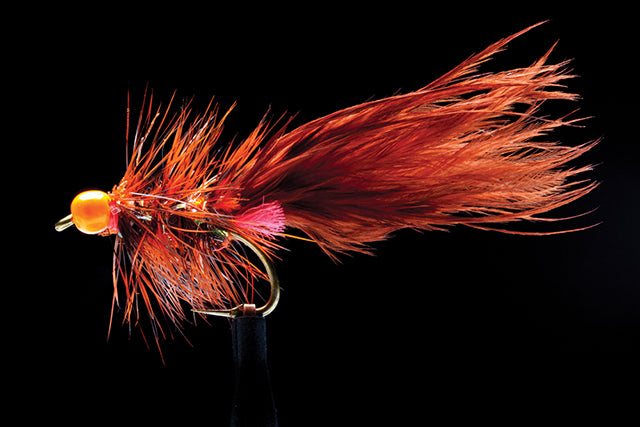
Yoshi Bugger Brown #8

Classic Rabbit Orange #6

Otter's Egg Tangerine #12

BH Woolly Bugger Hustler #8
CZECH NYMPHING
Fly Rod: Primal Zone 10ft #4
Reel: Large Arbour fly reel 5/6
Fly Line: Airflo SLN
Leader: DOC Fishing regulations mandate a maximum of six metres from fly line to the bottom fly.
Construction: 13ft of 15lb mono joined to a section of 12lb Flylab indicator tippet of opposing colours, tie a tippet ring tied to the end.
Tippet: Fluorocarbon 6-8lb
- Rig:
- Attach a 5ft section of 6lb fluoro tippet to the tippet ring.
- With another section 30cm long, attach this piece to the tippet with a surgeon’s knot approx. 2.5ft from the end, this creates your dropper tag.
- Tie the lightest of your two flies to the dropper tag with the heaviest fly on the bottom of the main tippet
- In winter it can pay to shorten up your dropper length to around 20cm and position 1ft from your bottom fly. That way both flies are down deep, quickly, and that's where the fish will be.
Flies:

Jig BTB Pheasant Tail #10-16

Jig BTB Peeping caddis #12-14

Newbury’s Dirty Jig Olive #12-14

STB Perdigon Black #12-16

Hotspot Czech Caddis Green #12-16

Pheasant Tail Flashback #14-16

Otters Egg Apricot #14

Otters Egg Tangerine #14


